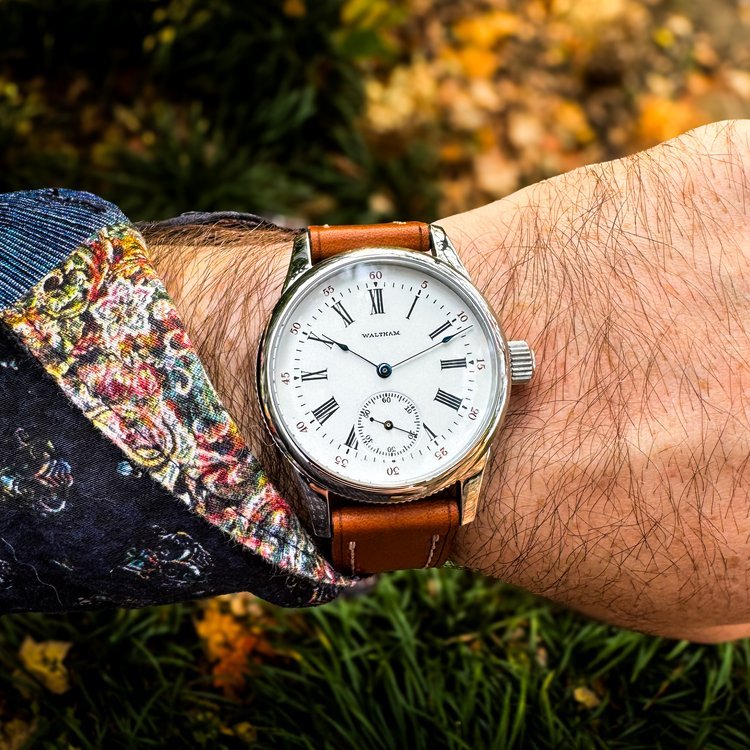Guide to Pocket Watch Size and resulting pocket watch conversion
Understanding Pocket Watch Sizes and Their Conversion to Wristwatches
When converting pocket watches into wristwatches, one of the most important factors to consider is the size of the original movement. Pocket watches come in various sizes, and understanding these sizes is essential for determining the final case diameter of a conversion. Movement size directly correlates to the size of the case, so let’s break down the most common pocket watch sizes and the resulting diameters of the conversions.
Pocket Watch Sizes and Conversions
16s (Size 16): While the 16s movement can result in a bold, substantial wristwatch with a 50 mm case, we do not often perform conversions with this size due to its larger dimensions. While some collectors appreciate the presence of a 16s conversion, the size makes it less suitable for everyday wear.
16s pocket watch conversion with a 50 mm diameter
12s (Size 12): The most common conversion we perform at Frett and Co Clockworks is from 12s pocket watch movements. A 12s movement conversion results in a wristwatch with a 44 mm case. This size offers a great balance between wearability and retaining the vintage aesthetic of the original pocket watch, making it the preferred choice for many of our clients.
12s pocket watch conversion with a 44 mm diameter
6s (Size 6): For those looking for something smaller, the 6s movement is another popular option. These conversions result in a 40 mm case, which provides a modern look while maintaining historical appeal.
6s pocket watch conversion with a 4o mm diameter
0s (Size 0): The smallest size we work with, the 0s pocket watch movement, results in a 36 mm wristwatch. It is a great choice for those who enjoy subtle, vintage-inspired timepieces that fit well on a variety of wrist sizes.
0s pocket watch conversion with a 36 mm diameter
Pocket Watch Size to Diameter Chart
To provide a clearer overview, here is a chart that summarizes pocket watch movement sizes and their corresponding wristwatch case diameters, ordered from largest to smallest:
Pocket watch movement size and resulting conversion diameter.
Additional Information on Pocket Watch Sizes
According to traditional standards used in watchmaking, pocket watch sizes are measured using a system based on the Lancashire gauge. In this system, size is indicated by the diameter of the movement measured across the dial plate, excluding the case. For reference, each "size" number represents an increase of 0.05 inches (1.27 mm). A movement of 0s, for example, measures approximately 29.63 mm in diameter. As the size increases, so does the diameter, with a 16s movement measuring about 43.18 mm.
Here is a typical breakdown of various pocket watch movement sizes, their corresponding diameters, and the wristwatch conversion diameters, ordered from largest to smallest:
Pocket watch movement sizes with their diameters in millimeters and inches, along with the corresponding wristwatch conversion case diameters.
Conclusion
At Frett and Co Clockworks, the 12s pocket watch movement is the most common conversion we perform due to its ideal size for creating wearable wristwatches. Whether you prefer the balance of a 44 mm case or the smaller, more refined look of a 36 mm conversion, pocket watch conversions offer a unique way to bring vintage timepieces into the modern era. Each movement size has its own character, and choosing the right one depends on both aesthetic preference and practical wearability.
By understanding pocket watch sizes and their wristwatch equivalents, you can make an informed decision about which conversion will best suit your personal style.





